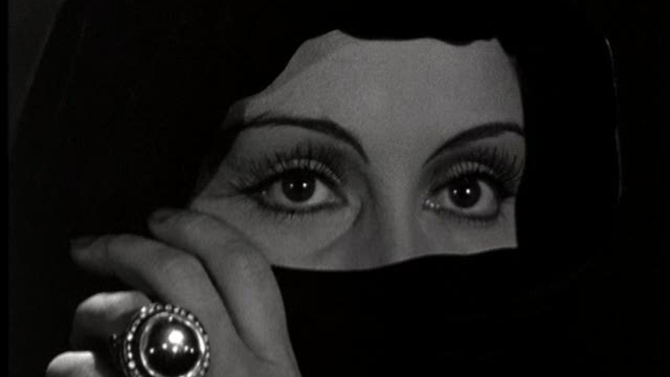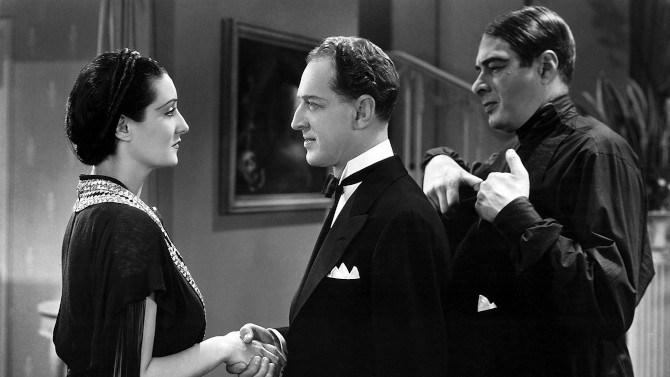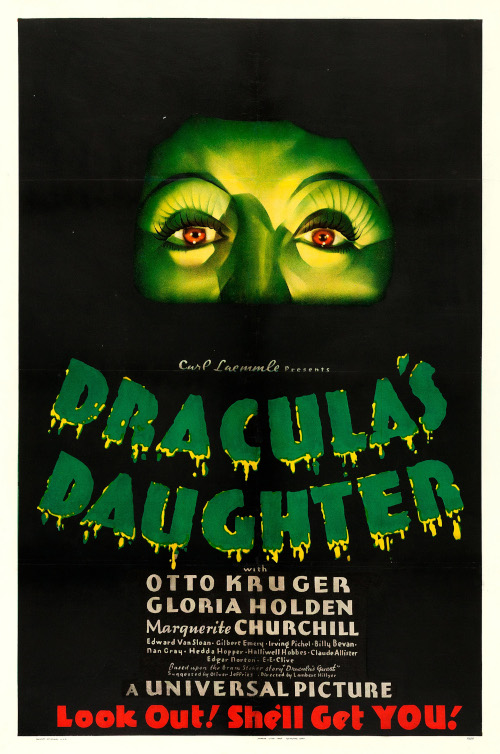Five years after one of its two gargantuan horror hits of 1931, Universal finally released its long awaited sequel. . . rather surprisingly, without the original film’s star making a return appearance. Dracula’s Daughter (1936 – celebrating its 85th anniversary this 2021), takes the bold stance of starting up immediately after the previous film’s conclusion (90 year old spoiler alert), where Bela Lugosi’s Dracula has just been killed by Dr. Von Helsing (Victor Van Sloan).
Directed by Lambert Hillyer (a late replacement for A. Edward Sutherland – who moved on after delays), we pick up with poor Von Helsing being arrested by the police for the ‘staking’ murder of Count Dracula. Transported to Scotland Yard (along with the bodies of Dracula and equally as dead Renfield) by two cops, the pretending not to be scared Hawkins (Halliwell Hobbes) and the bumbling and utterly petrified Albert (Billy Bevan), the less than dynamic duo soon lose the body of the infamous Count.
With Von Helsing looking at two scenarios – the gallows or the insane asylum, he reaches out to his former student, psychiatrist Jeffrey Garth (Otto Kruger – High Noon), for aid. Soon, Garth is introduced to a rather hypnotic Hungarian woman, Countess Marya Zaleska (Gloria Holden), who has just arrived in Britain – her station in life opening the door into his circle of friends. . . much to the chagrin of his personal secretary and Baroness, Janet (Marguerite Churchill). Best described as a mystery wrapped up in the highest of fashion, the Countess quickly latches onto the psychiatrist, looking for his aid in breaking some unspeakable addictive curse that courses through her veins.
Playing like a horror version of a Sherlock Holmes murder mystery, one can almost see Kruger’s Garth as a precursor to Basil Rathbone’s Holmes, and Bevan’s poor blundering officer Albert as Nigel Bruce’s Watson. Fusing so many different thematic angles, certain cinematography will harken viewers back to the German expressionism era (especially the vampire’s first victim in foggy London), while other moments will bring more straightforward gothic horror (the cobwebbed Transylvanian castle), and lest we forget the humour. . . for there are plenty of colourful characters that bring some laughs along the way. There is a certain cheekiness in quotes like this one from Dr. Garth, “you know, this is the first woman’s flat I’ve been in that didn’t have at least twenty mirrors in it”. Perhaps most intriguingly, the Countess and her ‘European’ ways bring with it a definite hint of lesbianism – something that would have been very taboo in 1936. Blonde Nan Grey has a memorable part as a down on her luck young woman who gets sucked into this rather sordid game she plays, while there is another ‘hovering’ moment near the conclusion with Janet that just oozes a certain sensuality.
Doing a solid job at keeping the lore constant with the original, it was actually producer David O. Selznick who had the original idea (he is credited as ‘Oliver Jeffries’ in the credits). After famed Frankenstein director James Whale backed away from the project, Garrett Fort (who also did the screenplay for Dracula) and his writing team continued the theme of the eyes being so very powerful. . . while a shimmering and hefty ring assists in her nefarious hypnosis. Instead of Renfield, the loyal servant in this feature is Sandor (Irving Pichel) – an evil focused grease-ball who has a surprisingly strong hold on the Countess (unlike Renfield – see the iconic Nocturne No. 5 piano sequence). . . and has horrible aim (you’ll find out what I mean when you watch it). He is both wonderfully creepy and campy.
In fact, Dracula’s Daughter could have been a very different picture. Lugosi was originally retained for continuity’s sake (he ended up wanting too much money – only spotted in a few publicity photos), while Jane Wyatt and Cesar Romero had been hired onto the project (Churchill and Kruger replaced them). In fact, at one point, even Boris Karloff and Colin Clive (the pairing from Frankenstein) had been announced for the sequel.
Though not spectacular, Dracula’s Daughter is, in many ways, ahead of its time. Adding a sympathetic side to the vampire, it is addiction, not pure evil, that drives her forward. A cure is her goal (by means of Dr. Garth’s psychiatry), these lofty, often cerebral (and even philosophical) ideals the concluding wave of the first Universal horror era (the second wave would return with the much more straight-forward 1939’s Son of Frankenstein). A final note – keep an eye open for famed celebrity gossip columnist Hedda Hopper as socialite Lady Esme Hammond – a cool spot for film buffs. So, feed your horror addiction and find love with this lesser known sequel. . . like Cupid on Valentine’s Day, he might just stake you with his arrow.




